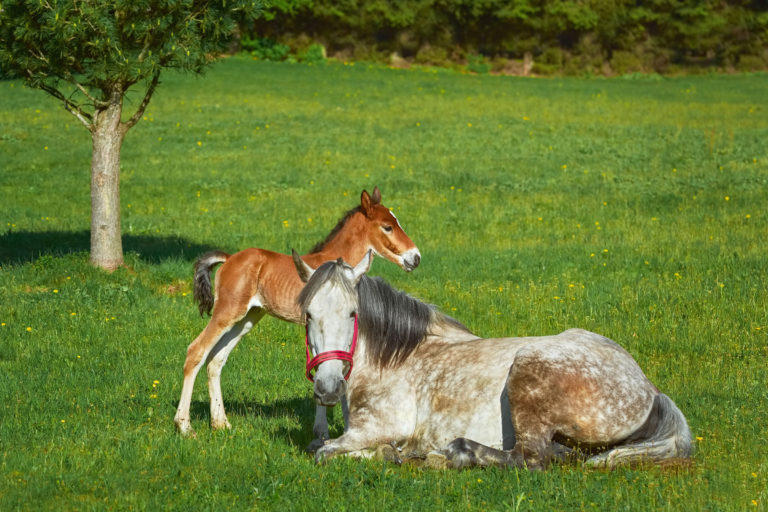
Veterinarians have many options for treating osteoarthritis in horses. One, 2.5% polyacrylamide gel (PAAG), has become popular for its efficacy in reducing lameness in affected horses. In a recent study, an international team of researchers reviewed cytologic and histologic changes in normal equine joints following intra-articular injection with 2.5% PAAG.
Study on 2.5% PAAG
The 10 Thoroughbreds used in the study did not suffer from osteoarthritis or demonstrate other signs of joint disease based on thorough lameness examination. The horses received either 50 mg (2 ml) or 100 mg (4 ml) of 2.5% PAAG into the fetlock or middle carpal joint. Some horses had multiple joints injected, with a total of 13 treated joints in the study.
The researchers obtained synovial fluid from the joints prior to injection in seven of 10 horses to serve as controls. Previous study results document that the gel integrates with tissue by seven to 14 days. On Day 14 post-injection, the scientists aspirated synovial fluid from the treated joints of five horses and from four horses at Day 42 post-injection. At Day 90, one horse had fluid aspirated from four treated joints. Two horses were euthanized at Day 14 and two at Day 42, and the fetlock and carpal joint capsules underwent gross and histologic exam. In those four horses, the untreated joints of the contralateral limbs served as controls.
The recommended dose for 2.5% PAAG is 1-4 ml per joint. In this study, the researchers injected one to two times the recommended dose into a single joint and up to three times the dose in horses with more than one joint injected. No horses suffered any adverse effects.
Study Results
The results indicate treatment with 2.5% PAAG “causes a minimal transient cellular response in the synovial fluid before localizing in the subintima of the synovial lining where it induces a reactive subintimal layer that is predominately monocytic in nature.” The response to this foreign material is a simple macrophage-driven phagocytic response representative of mild inflammation. This macrophage-driven response elicits villous hypertrophy and hyperplasia compared to the non-injected joints. However, the authors noted “the differences between injected and non-injected joints for this variable were considered subtle.”
On gross examination postmortem, no free gel was visible overlying the synovial surface or in the joint space. The researchers noted no associated fibrosis or mineralization and said the gel does not serve as a nidus for infection. Practitioners have experienced a complication rate of only 0.04%, mostly that of mild and transient joint edema.
Post-Treatment Protocols and Results
Due to the “low level of irritation,” the study authors recommend providing reduced exercise—walking, swimming, treadmill, or light canter—for the first 10 to 14 days following treatment while some transient inflammation and tissue integration take place.
Clinical trials for 2.5% PAAG that have followed horses for up to two years have shown excellent clinical efficacy to the point of complete resolution of lameness in 65.3-83.3% of horses across various disciplines.
Reference
Lowe J, de Clifford L, Julian A, Koene A. Histologic and cytologic changes in normal equine joints after injection with 2.5% injectable polyacrylamide hydrogel reveal low-level macrophage-driven foreign body response. JAVMA Jan 2024; DOI: 10.2460/javma.23.10.0553








